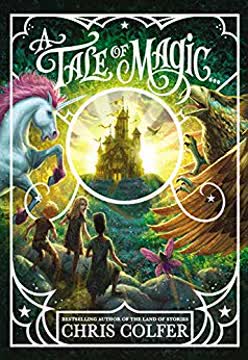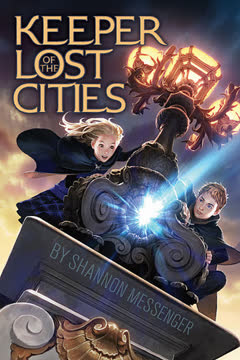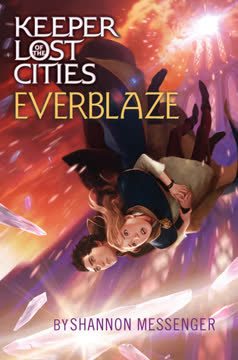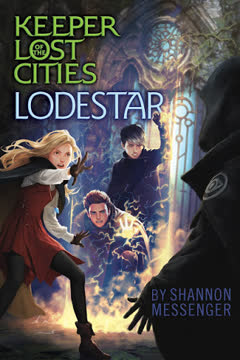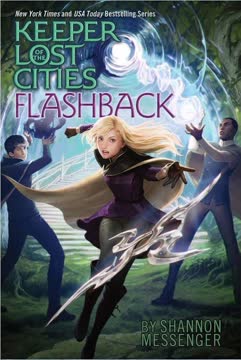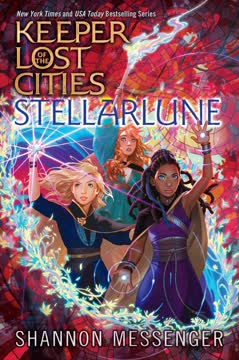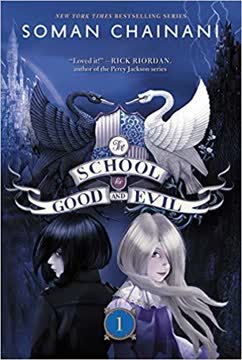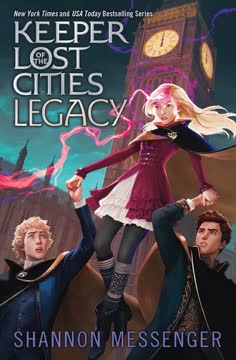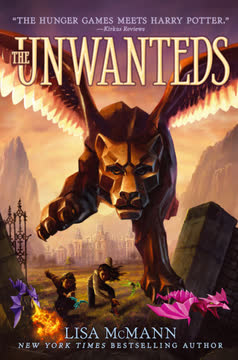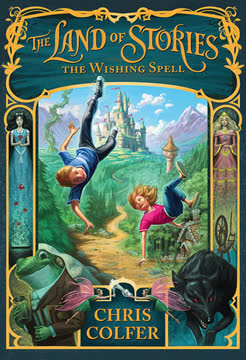Plot Summary
Outlawed Magic, Hidden Hope
In a land divided into four kingdoms, magic is not just illegal—it is despised and feared. Persecution is brutal and swift, with entire families punished for the mere suspicion of magic. The Southern Kingdom, ruled by King Champion XIV, is the only place where magic users are spared death, instead sentenced to hard labor. The king's leniency is personal, rooted in the trauma of losing his mother to a witch hunt. In this world, the magical community is forced into hiding, and the seeds of change are sown in secrecy and pain.
Brystal's Secret World
Fourteen-year-old Brystal Evergreen lives in the oppressive Southern Kingdom, where girls are forbidden to read or aspire beyond marriage and motherhood. Brystal, however, is insatiably curious, secretly devouring books her brother Barrie sneaks to her. Her family is both a source of love and repression—her father, a Justice, is stern and traditional, while her mother is quietly sympathetic. Brystal's intelligence and yearning for more set her apart, but also put her in grave danger.
The Forbidden Library
Brystal's longing for knowledge leads her to a daring plan: she secures a job as a maid at the Chariot Hills Library, using a legal loophole. There, she is awestruck by the vast world of books, reading in secret after hours. Her world expands as she discovers banned books hidden in a secret room—works that challenge the kingdom's history, religion, and the very nature of magic. These books plant the seeds of rebellion and self-discovery in Brystal's heart.
Discovery and Danger
Among the banned books, Brystal finds The Truth About Magic by Celeste Weatherberry. She reads aloud an ancient incantation, and to her shock, flowers burst into bloom around her—she is a fairy, born with magic. Terrified, she tries to hide her gift, but the truth gnaws at her. When she tests her powers again, she is caught by the librarian and guards, accused of witchcraft, and thrown into prison. Her family is devastated, and her future seems doomed.
Trial by Family
Brystal's trial is a farce—her brothers are forced into the roles of prosecutor and defender, and her father is torn between reputation and love. The corrupt Justice Oldragaid presides, eager for vengeance. Brystal's brother Barrie, not knowing the defendant is his sister, recommends the death penalty. At the last moment, her father intervenes, using his influence to have her sentenced to a correctional facility instead of execution. Brystal is disowned, her family shattered.
Imprisoned and Unbroken
Brystal is sent to the Bootstrap Correctional Facility for Troubled Young Women, a brutal workhouse masquerading as a place of reform. There, she meets Pip, a magical child with the ability to squeeze through bars. The girls endure cruelty and deprivation, but Brystal's spirit remains unbroken. She risks punishment to protect Pip, and her compassion inspires hope among the other inmates. The arrival of Madame Weatherberry, a mysterious and powerful woman, changes everything.
Madame Weatherberry's Offer
Madame Weatherberry, a fairy on a mission to change the world's view of magic, arrives at the facility in a golden carriage drawn by unicorns. She secures Brystal's release with the king's permission, offering her a place at a new school for magic. Brystal is torn between loyalty to her friend Pip and the chance for freedom, but Pip urges her to go. With her mother's secret blessing, Brystal leaves her old life behind, stepping into a world of possibility.
Gathering the Gifted
Madame Weatherberry and Brystal travel the kingdom, recruiting other magical children: Xanthous, a boy who can conjure fire but is haunted by guilt; Emerelda, a girl who turns coal into jewels but is wary of humans; and others, each with unique gifts and wounds. The journey is perilous, with threats from ogres, trolls, and the ever-present danger of discovery. Along the way, Brystal learns that magic is as diverse as those who wield it, and that acceptance begins with self-acceptance.
Arrival at the Academy
The group arrives at Madame Weatherberry's Academy of Magic, a hidden castle in the In-Between, a wild land between kingdoms. The academy is a haven for magical creatures—unicorns, gryphons, pixies—and for the children who have nowhere else to belong. Brystal and her classmates, including the prickly Tangerina and the watery Skylene, begin their education in magic, friendship, and the meaning of family. The castle itself adapts to their needs, reflecting the magic within.
Lessons in Magic and Self
The students learn the four branches of magic: Improvement, Rehabilitation, Manifestation, and Imagination. Each faces personal challenges—Brystal struggles with magiclexia, a block that makes her magic unpredictable, until Madame Weatherberry gives her a wand. Rivalries flare, especially with the apprentices, but shared dangers and Brystal's compassion draw the group together. They learn that magic is not just power, but responsibility, and that their greatest strength lies in unity.
The Unwanted and the Witches
The academy is visited by four sinister witches—Crowbeth, Newtalia, Squidelle, and Feliena—whose animalistic features betray their corruption. Madame Weatherberry's past with them is shrouded in secrecy, and their presence foreshadows a greater threat. Lucy, a new student with chaotic magic, fears she is a witch, but Brystal's support helps her discover her true self. The students form a pact to protect and support one another, realizing that the world's hatred must not divide them.
Secrets, Lies, and Truth
Brystal and her friends learn that the division between fairies and witches is not innate, but a social construct—anyone can choose magic or witchcraft. Madame Weatherberry's book, The Truth About Magic, was written to protect the magical community by creating a false dichotomy. The Tree of Truth, a magical oracle, confirms that Madame Weatherberry's intentions were noble but her methods flawed. The students grapple with betrayal, but ultimately choose to honor her vision by forging their own path.
The Northern Conflict
The Northern Kingdom is ravaged by the Snow Queen, a witch of immense power whose blizzards threaten to engulf the world. Madame Weatherberry, weakened by repeated battles, is the only one who can hold her back. The Fairy Council—Brystal and her friends—set out on a perilous journey through the In-Between to save their teacher. Along the way, they face trolls, goblins, and their own fears, relying on each other's strengths to survive.
The Snow Queen Revealed
In the heart of the Northern Kingdom, Brystal confronts the Snow Queen and discovers the shocking truth: she is Madame Weatherberry, consumed by the anger and pain she tried to suppress. The Snow Queen is not a separate being, but the manifestation of Madame Weatherberry's repressed rage and trauma. Her plan was to create a threat so great that the world would have to accept magic, but the cost has been catastrophic. Brystal is faced with an impossible choice.
Compassion's Choice
Brystal refuses to kill Madame Weatherberry, despite her teacher's pleas. She realizes that true change cannot be built on violence and fear. Instead, she convinces Madame Weatherberry to go into seclusion, keeping the threat of the Snow Queen alive as leverage for the magical community. Brystal's compassion breaks the cycle of hate, offering a new path forward. The Fairy Council returns as heroes, and the kingdoms are forced to negotiate a new future.
A New Era Begins
The Fairy Council presents their demands to the rulers: legalization of magic, equality for women, freedom for magical creatures, and the end of religious and political oppression. The kingdoms, desperate for protection from the Snow Queen, agree. The academy becomes a sanctuary for the magical community, and Brystal, now leader of the Fairy Council, welcomes a new generation of students. The story ends with hope—a new chapter for magic, built on compassion, unity, and the courage to be oneself.
Characters
Brystal Evergreen
Brystal is a fiercely intelligent and empathetic girl who refuses to accept the limitations imposed on her by society. Her journey from oppressed schoolgirl to leader of the magical world is marked by courage, self-doubt, and a relentless drive for justice. Brystal's greatest strength is her compassion—she risks everything for others, even when it means breaking the rules or facing danger. Her struggle with magiclexia mirrors her internal battle with self-acceptance, and her refusal to kill Madame Weatherberry marks her as a true visionary, choosing mercy over vengeance. Brystal's relationships—with her family, her classmates, and especially Madame Weatherberry—are complex, shaped by love, betrayal, and forgiveness. She becomes the heart of the Fairy Council, embodying the hope for a better world.
Madame Celeste Weatherberry / The Snow Queen
Madame Weatherberry is a charismatic, enigmatic fairy determined to change the world's perception of magic. Her past is marked by trauma—rejection by her family, the murder of her husband, and years of persecution. Her attempt to save the magical community leads her to create the Snow Queen, a monstrous manifestation of her repressed anger. As both mentor and adversary, she is a study in duality: nurturing and destructive, hopeful and despairing. Her relationship with Brystal is central—she sees in Brystal the possibility of redemption and a new beginning. Ultimately, Madame Weatherberry's tragedy is her inability to heal her own wounds, but her legacy is the compassion she inspires in her students.
Lucy Goose
Lucy is brash, irreverent, and often abrasive, but beneath her tough exterior is a deep vulnerability. Feared to be a witch, she struggles with self-acceptance and the fear of becoming a monster. Her humor and mischief mask her pain, but Brystal's friendship helps her find her place. Lucy's specialty for "trouble" is both a source of chaos and a catalyst for growth in the group. She is fiercely loyal, quick-witted, and unafraid to challenge authority, making her an essential member of the Fairy Council.
Xanthous Hayfield
Xanthous is a gentle boy with the power of fire, traumatized by the accidental death of his father and the shame of his secret interests. His journey is one of self-forgiveness and learning to harness his abilities. Xanthous's struggle with his Muter Medal symbolizes his fear of his own power and identity. Through the support of his friends, he learns to let go of shame and embrace who he is, playing a crucial role in the defeat of the Snow Queen.
Emerelda Stone
Raised by dwarfs after being abandoned by her human parents, Emerelda is practical, blunt, and slow to trust. Her ability to turn coal into jewels is a metaphor for her own hidden worth. Emerelda's skepticism is balanced by deep loyalty to her friends, and her journey is one of opening up to others and finding pride in her uniqueness. She is a grounding force in the group, often providing the voice of reason.
Tangerina Turkin
Tangerina's specialty with bees makes her both formidable and isolated. She is competitive, especially with Brystal, and struggles with feelings of inadequacy. Her journey is one of humility and learning to value others' strengths. Tangerina's friendship with Skylene is a source of comfort, and her eventual acceptance of Lucy and Brystal marks her growth.
Skylene Lavenders
Skylene's water-based magic and shy demeanor make her easy to underestimate. She is often the peacemaker, supporting Tangerina and the others. Skylene's journey is about finding her voice and recognizing her own worth. Her scientific approach to magic and her empathy make her an important member of the Council.
Pip Squeak
Pip is a young girl with the ability to squeeze through bars, representing resilience and the enduring spirit of the oppressed. Her friendship with Brystal is a source of comfort and motivation, and her eventual rescue from the facility is a testament to the power of compassion and solidarity.
Justice Evergreen
Brystal's father embodies the harsh, unyielding values of the Southern Kingdom. His love is conditional, and his need for control leads to the destruction of his family. His inability to accept Brystal's gifts is both a personal and societal tragedy, highlighting the cost of bigotry and fear.
The Witches: Crowbeth, Newtalia, Squidelle, Feliena
These witches, each marked by animalistic features, represent the dangers of unchecked anger and the consequences of choosing vengeance over healing. Their alliance with the Snow Queen and betrayal of Madame Weatherberry serve as a warning about the seductive power of hate and the importance of community.
Plot Devices
Duality of Magic and Witchcraft
The central device is the false dichotomy between fairies and witches, used by Madame Weatherberry to protect the magical community. The revelation that anyone can choose magic or witchcraft, and that both exist within everyone, is a powerful metaphor for identity, prejudice, and the capacity for change. This device is used to explore themes of self-acceptance, the dangers of repression, and the importance of compassion.
The Academy as Sanctuary and Microcosm
The academy is both a literal and symbolic refuge, where outcasts can discover their strengths and confront their weaknesses. It serves as a microcosm for society, with its own hierarchies, rivalries, and alliances. The magical castle, which adapts to its inhabitants, reflects the inner journeys of the characters.
The Northern Conflict and the Snow Queen
The Snow Queen is both a real threat and a manifestation of Madame Weatherberry's internalized pain. The conflict in the Northern Kingdom is a narrative device that externalizes the battle between hope and despair, compassion and vengeance. The use of weather as both weapon and signal (the northern lights) is a recurring motif, symbolizing the power and danger of suppressed emotion.
The Tree of Truth and Banned Books
The secret library, banned books, and the Tree of Truth are devices that challenge the official narrative and encourage critical thinking. They represent the importance of questioning received wisdom, the power of knowledge, and the necessity of confronting uncomfortable truths.
The Fairy Council and Collective Action
The formation of the Fairy Council, with each member bringing unique strengths and wounds, is a device that emphasizes the power of community. Their collective action, rather than individual heroism, is what brings about change. The Council's demands and negotiations with the kingdoms are a model for social justice and reform.
Analysis
Chris Colfer reimagines the fantasy genre as a vehicle for exploring real-world issues: gender roles, systemic oppression, the trauma of exclusion, and the complexity of identity. The novel's greatest strength is its refusal to offer easy answers—magic is not a simple gift, but a burden and a choice; enemies are often former friends, and the line between good and evil runs through every heart. Brystal's journey from marginalized girl to leader of a new world is both inspiring and sobering, reminding readers that true change requires courage, empathy, and the willingness to confront uncomfortable truths. The book's message is clear: the fight for justice is ongoing, and the most powerful magic is the ability to love and accept oneself and others, even in the face of fear and hate. In a world still grappling with prejudice and division, A Tale of Magic... is a timely call to action—and a promise that a better future is possible if we dare to imagine it.
Last updated:
FAQ
0. Synopsis & Basic Details
What is A Tale of Magic... about?
- A World Suppressing Magic: A Tale of Magic... introduces a world where magic is outlawed and its practitioners, labeled "witches" and "warlocks," are brutally persecuted across four kingdoms. The Southern Kingdom, under King Champion XIV, offers a slight reprieve, sentencing magic users to hard labor rather than death.
- Brystal's Forbidden Quest: The story follows fourteen-year-old Brystal Evergreen, a girl in the oppressive Southern Kingdom where women are forbidden to read. Driven by an insatiable curiosity, Brystal secretly devours books, eventually securing a job as a maid in a library to access hidden knowledge.
- Discovery, Peril, and a New Path: Brystal's secret reading leads her to discover she possesses magic, resulting in her arrest and sentencing to a harsh correctional facility. Rescued by the enigmatic Madame Weatherberry, Brystal joins an academy of magic, embarking on a journey to understand her powers, confront a world steeped in prejudice, and ultimately challenge the very definition of good and evil.
Why should I read A Tale of Magic...?
- Unveiling Hidden Truths: Readers should delve into A Tale of Magic... for its profound exploration of societal oppression, challenging preconceived notions of good and evil, and the power of knowledge. The narrative expertly peels back layers of historical and religious manipulation, revealing how power structures control narratives to maintain authority.
- Empowering Character Journeys: The book offers deeply resonant character arcs, particularly Brystal's transformation from a repressed girl to a compassionate leader. Her journey, alongside other magical outcasts, highlights themes of self-acceptance, found family, and the courage to defy unjust systems, making it an inspiring read for anyone who feels marginalized.
- Rich World-Building & Allegory: Chris Colfer crafts a vibrant fantasy world that serves as a powerful allegory for real-world issues like gender inequality, prejudice, and the dangers of unchecked anger. The blend of whimsical magic with serious social commentary provides both escapism and thought-provoking insights, making it a unique and memorable fantasy experience.
What is the background of A Tale of Magic...?
- Prequel to a Beloved Series: A Tale of Magic... serves as a prequel to Chris Colfer's The Land of Stories series, offering readers a deeper understanding of the origins of magic and the fairy tale world's complex history. It establishes the foundational conflicts and characters that shape the later narratives, enriching the overall lore.
- Societal Oppression & Control: The story is set against a backdrop of extreme societal control, particularly in the Southern Kingdom, where women are denied education and magic is demonized. This reflects historical periods of censorship and gender inequality, providing a fantastical lens through which to examine real-world injustices and the mechanisms of power.
- Trauma and Political Manipulation: The political landscape is shaped by the trauma of past witch hunts and the self-serving motives of monarchs and Justices. King Champion XIV's leniency towards magic users stems from his mother's execution, while the Justices manipulate laws and religion to maintain their grip on power, creating a deeply corrupt and fearful society.
What are the most memorable quotes in A Tale of Magic...?
- "Magic is not a choice. Ignorance is a choice. Hatred is a choice. Violence is a choice. But someone's existence is never a choice, or a fault, and it's certainly not a crime. You would be wise to educate yourself.": This powerful declaration by Madame Weatherberry to King Champion XIV in the prologue encapsulates the core theme of identity and prejudice, challenging the very foundation of the kingdom's laws against magic. It's a pivotal moment that defines the philosophical battle at the heart of the story.
- "We're all just a couple of mistakes away from becoming the people we despise. So don't think worse of yourself, but let this change how you think of yourself. Start valuing who you are, more than what you are. Prove you're better than most people by showing more acceptance and empathy. And fuel your pride with what you earn and create, instead of what you're born with.": Brystal's profound advice to Tangerina and Skylene after the truth about fairies and witches is revealed, highlights her growth as a leader and her "specialty for compassion." This quote is central to the book's message of self-acceptance and overcoming internalized prejudice.
- "No matter how cruel or unfair the world becomes, never forfeit your happiness. And no matter how poorly someone treats you, never let anyone's hate rob you of compassion. The battle of good and evil isn't fought on a battlefield—it begins in each and every one of us. Don't let your anger choose sides for you.": Madame Weatherberry's final, poignant lesson to Brystal in Tinzel Palace serves as her ultimate legacy. It distills the book's complex themes of anger, forgiveness, and the choice between perpetuating cycles of hate or forging a path of compassion, directly influencing Brystal's leadership.
What writing style, narrative choices, and literary techniques does Chris Colfer use?
- Allegorical Fantasy with Modern Sensibilities: Colfer employs a classic fantasy narrative structure, complete with quests, magical academies, and mythical creatures, but infuses it with strong allegorical undertones. This allows him to address complex social issues like gender inequality, systemic oppression, and the dangers of unchecked anger in an accessible and engaging way for young adult readers.
- Third-Person Omniscient with Shifting Focus: The narrative primarily uses a third-person omniscient point of view, offering insights into multiple characters' thoughts and feelings, particularly Brystal's. However, it occasionally shifts focus to other characters or broader societal perspectives, providing a comprehensive view of the world and its inhabitants, and building suspense around Madame Weatherberry's secrets.
- Symbolism, Foreshadowing, and Irony: Colfer masterfully uses symbolism (e.g., books as freedom, clothing as identity, weather as emotion), subtle foreshadowing (e.g., Madame Weatherberry's one glove, the black envelopes, the Northern Conflict), and dramatic irony (e.g., Brystal's "maid" lie, Madame Weatherberry's "sick friend" story) to enrich the plot and deepen thematic resonance, rewarding attentive readers with layers of meaning.
1. Hidden Details & Subtle Connections
What are some minor details that add significant meaning?
- Mrs. Evergreen's Silent Rebellion: Brystal's mother, Mrs. Evergreen, initially appears as a strict enforcer of societal norms, but subtle details reveal her quiet defiance. Her brief spark of sympathy when Brystal asks why women can't read, and her ultimate act of sewing the permission form back together and signing it, show a deep, unspoken understanding of her daughter's plight and her own unfulfilled life. This highlights the pervasive nature of oppression, even affecting those who seem to uphold it.
- The Adaptive Castle's Personalization: The magical academy castle's ability to grow and furnish rooms based on the occupants' "specific needs" (Chapter 9) is more than just a whimsical detail; it subtly reflects the characters' inner selves and past traumas. Xanthous's fireproof room, Emerelda's cave-like chamber, and Brystal's book-filled tower are physical manifestations of their identities and struggles, emphasizing the academy as a place of self-discovery and healing.
- Mr. Woolsore's Financial Motivation: The librarian, Mr. Woolsore, initially dismisses Brystal's application due to her age and gender, citing "distraction" for male students. However, he quickly hires her when she offers to work for "three gold coins a week" instead of six (Chapter 2). This seemingly minor detail subtly exposes the underlying hypocrisy and greed of the Southern Kingdom's patriarchal system, where economic benefit can easily override supposed moral or legal principles.
What are some subtle foreshadowing and callbacks?
- Madame Weatherberry's Single Glove: From her very first appearance in the prologue, Madame Weatherberry wears "curiously, only one glove, which covered her left arm." This seemingly innocuous detail subtly foreshadows her hidden injury and the tragic origin of the Snow Queen, later revealed to be frostbite from her use of witchcraft (Chapter 18). It's a visual cue of her internal struggle and the duality she embodies.
- Horence's Cryptic Warning: When Brystal and Lucy encounter Horence in the In-Between, he points in their direction, then shows "two of his fingers, and then reduced them to one" (Chapter 17). Brystal initially finds this confusing, but later realizes it was Horence's non-verbal warning about Madame Weatherberry's dual identity as the Snow Queen, and the impending "two becoming one" as the witch consumed her. This callback deepens the tragic romance of Horence's backstory and his enduring loyalty.
- The Black Envelopes' Ominous Nature: The "scaly black envelopes" that Madame Weatherberry receives, which she claims are updates on a "sick friend," are consistently described with unsettling details like "scaled like a reptile's skin and sealed with wax the color of dried blood" (Chapter 10). These descriptions subtly hint at their true origin from the witches and their connection to the dark, escalating Northern Conflict, foreshadowing Madame Weatherberry's deeper, more dangerous involvement.
What are some unexpected character connections?
- Madame Weatherberry and Horence's Tragic Love: The revelation that Madame Weatherberry (Snowy Weatherberry) was the witch Horence loved, and that his death and her attempt to resurrect him led to her frostbite and the birth of the Snow Queen (Chapter 18), is a profound and unexpected connection. This transforms Horence from a mysterious protector into a living testament to Madame Weatherberry's deepest trauma and the catalyst for her complex plan, adding immense emotional depth to both characters.
- Brystal's Unwitting Connection to the Castle: The castle's "decision" to place Brystal's bedroom directly above Madame Weatherberry's office, and its "desire" for Brystal to "spy" on her teacher (Chapter 16), suggests a deeper, almost sentient connection between Brystal and the magical residence. This implies Brystal was chosen not just by Madame Weatherberry, but by the magic of the academy itself, highlighting her inherent destiny and the castle's role as a protective, guiding entity.
- Lucy's "Sixth Sense for Danger": Lucy's seemingly flippant claim of a "sixth sense for danger" (Chapter 17) proves surprisingly accurate when she correctly identifies the safer path in the goblin tunnels, despite Brystal's logical reasoning. This subtle detail elevates Lucy's "specialty for trouble" beyond mere chaos, suggesting an intuitive connection to the darker, more unpredictable aspects of the magical world, making her a more nuanced and valuable member of the Fairy Council.
Who are the most significant supporting characters?
- Mrs. Vee, the Academy's Heart: More than just a housekeeper, Mrs. Vee serves as the emotional anchor and comic relief of the academy. Her unwavering kindness, maternal care for the students, and often-terrible jokes (e.g., "If all my jokes were good I certainly wouldn't have this job! HA-HA!") provide a crucial sense of normalcy and warmth in a world of magic and danger. She represents unconditional acceptance and the simple joys of a chosen family.
- Horence, the Silent Guardian: The three-headed knight, Horence, is a powerful and tragic figure whose silent presence is deeply significant. His backstory as Madame Weatherberry's murdered husband, resurrected by dark magic, makes him a living symbol of the human cost of prejudice and the enduring power of love and sacrifice. His role as a protector, guiding the students through the In-Between, underscores the academy's mission of safeguarding the vulnerable.
- Pip Squeak, the Catalyst for Compassion: Pip, the young girl Brystal befriends at the Bootstrap Correctional Facility, is a poignant symbol of innocence and resilience under oppression. Her simple act of sharing a blanket and Brystal's fierce loyalty to her (refusing to leave without her) are pivotal. Pip's vulnerability and Brystal's desire to protect her directly motivate Brystal's commitment to Madame Weatherberry's mission, making Pip a silent but powerful force for change.
2. Psychological, Emotional, & Relational Analysis
What are some unspoken motivations of the characters?
- Justice Evergreen's Reputation Obsession: Justice Evergreen's primary motivation is not genuine adherence to the law or love for his family, but an overwhelming desire to protect his "good reputation" (Chapter 1). His willingness to disown Brystal and send her to a correctional facility, only to later try and claim her when she becomes a hero, reveals a deep-seated insecurity and hypocrisy, prioritizing public image over familial bonds.
- Madame Weatherberry's Suppressed Rage: Beneath Madame Weatherberry's cheerful and optimistic demeanor lies a profound, unspoken motivation: a lifetime of suppressed anger and trauma. Her "sick friend Queenie" is a metaphor for her own internal battle, and her plan to create the Snow Queen was a desperate, misguided attempt to externalize and control this rage, ultimately driven by a desire for justice for the magical community, but corrupted by her own unhealed wounds.
- Xanthous's Internalized Shame: Xanthous's extreme fear of his fire magic and his desire to drown himself are rooted in the unspoken shame of his father's death and his "secret" of playing with dolls (Chapter 15). His father's abuse for this "forbidden act" instilled a deep belief that his true self was inherently destructive and wrong, leading to a profound self-hatred that Madame Weatherberry and Brystal work to dismantle.
What psychological complexities do the characters exhibit?
- Madame Weatherberry's Duality of Self: Madame Weatherberry embodies a profound psychological complexity, grappling with the duality of her compassionate fairy self and the vengeful Snow Queen, a manifestation of her repressed anger and trauma. Her struggle highlights the psychological toll of systemic oppression, showing how unaddressed pain can transform into destructive forces, even within those who strive for good.
- Brystal's Internalized Oppression and Growth: Brystal initially exhibits the psychological complexities of internalized oppression, struggling with self-doubt and a need for perfection ("seeking perfection is a side effect of the oppression you've endured," Chapter 11). Her "magiclexia" symbolizes this internal block. Her journey involves dismantling these ingrained beliefs, learning to trust her instincts, and embracing her unique power, culminating in her compassionate leadership.
- Lucy's Cynicism as a Defense Mechanism: Lucy's abrasive humor, cynicism, and "specialty for trouble" are complex psychological defense mechanisms. Having been abandoned by her parents and fearing she was a witch, her tough exterior protects a deep vulnerability and fear of rejection. Her journey is about learning to trust, allowing herself to be vulnerable, and accepting her true identity as a fairy with a unique, albeit chaotic, gift.
What are the major emotional turning points?
- Brystal's Mother's Act of Defiance: The moment Mrs. Evergreen secretly sews together the shredded permission form and signs it, whispering to Brystal to "find the happiness you deserve" (Chapter 7), is a major emotional turning point. It signifies Brystal's mother's quiet rebellion against her oppressive life and her unconditional love, providing Brystal with the emotional validation and freedom she desperately needed to embark on her new path.
- Xanthous's Confession of Shame: During the "circle of secrets" game, Xanthous's tearful confession that his father beat him for "playing with dolls" (Chapter 15) is a powerful emotional release. This moment allows him to shed years of internalized shame and guilt, fostering a deeper bond with his classmates who offer unconditional acceptance, and enabling him to begin truly harnessing his magic without fear.
- Brystal's Refusal to Kill Madame Weatherberry: Brystal's decision not to kill Madame Weatherberry, despite her teacher's pleas and the perceived necessity for the world's salvation (Chapter 20), is the ultimate emotional turning point. It demonstrates Brystal's unwavering compassion and her refusal to perpetuate a cycle of violence, marking her as a leader who prioritizes empathy and a different path to peace, even when faced with an impossible choice.
How do relationship dynamics evolve?
- Brystal and Madame Weatherberry: From Mentor to Successor: Their relationship evolves from a traditional mentor-mentee dynamic to one of profound trust and eventual succession. Initially, Madame Weatherberry manipulates Brystal, but she also genuinely nurtures her potential. Brystal's unwavering
Review Summary
A Tale of Magic... received mixed reviews. Many praised its engaging story, magical world-building, and positive messages about acceptance and equality. Readers enjoyed the characters and found the book captivating. However, some criticized it for being overly preachy, lacking subtlety in its messaging, and having underdeveloped characters. Several reviewers noted similarities to other popular fantasy series. Despite its flaws, many fans of Colfer's previous work found it enjoyable and looked forward to continuing the series.
A Tale of Magic Series
Similar Books
Download PDF
Download EPUB
.epub digital book format is ideal for reading ebooks on phones, tablets, and e-readers.
